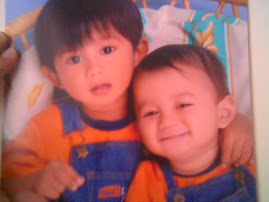
A milling machine is a machine tool used for the complex shaping of metal and other solid materials. Its basic form is that of a rotating cutter or endmill which rotates about the spindle axis (similar to a drill), and a movable table to which the workpiece is affixed. That is to say, the cutting tool generally remains stationary (except for its rotation) while the workpiece moves to accomplish the cutting action. Milling machines may be operated manually or under computer numerical control (see CNC).
Milling machines can perform a vast number of complex operations, such as slot cutting, planing, drilling, rebating, routing, etc. Cutting fluid is often pumped to the cutting site to cool and lubricate the cut, and to sluice away the resulting swarf.
-Types of milling machines

A more complex form of the milling machine is the Universal milling machine, in which the rotating cutter can be oriented vertically or horizontally, increasing the flexibility of the machine tool. The table of the universal machine can be swiveled through a small angle (up to about 15 degrees), enabling the axis of the spindle to coincide with the axis of a helix to be milled with the use of a gear driven indexing attachment.
-Milling machine variants
- Box or column mills are very basic hobbyist bench-mounted milling machines that feature a head riding up and down on a column or box way.
- Turret or Vertical ram mills are more commonly referred to as bridgeport-type milling machines. The spindle can be aligned in many different positions for a very versatile, if somewhat less rigid machine.
- C-Frame mills are larger, industrial production mills. They feature a knee and fixed spindle head that is only mobile vertically. They are typically much more powerful than a turret mill, featuring a separate hydraulic motor for integral hydraulic power feeds in all directions, and a twenty to fifty horsepower motor. Backlash eliminators are almost standard equipment. They use large NMTB 40 or 50 tooling. The tables on C-frame mills are usually 18" by 68" or larger, to allow multiple parts to be machined at the same time.
- Knee mill refers to any milling machine that has a vertically adjustable table.
- Bed mill refers to any milling machine where the spindle is on a pendant that moves up and down to move the cutter into the work. These are generally more rigid than a knee mill.
- Jig borers are vertical mills that are built to bore holes, and very light slot or face milling. They are typically bed mills with a long spindle throw. The beds are more accurate, and the handwheels are graduated down to .0001" for precise hole placement.
- Horizontal boring mills are large, accurate bed horizontal mills that incorporate many features from various machine tools. They are predominantly used to create large manufacturing jigs, or to modify large, high precision parts. They have a spindle stroke of several (usually between four and six) feet, and many are equipped with a tailstock to perform very long boring operations without losing accuracy as the bore increases in depth. A typical bed would have X and Y travel, and be between three and four feet square with a rotary table or a larger rectangle without said table. The pendant usually has between four and eight feet in vertical movement. Some mills have a large (30" or more) intergal facing head. Right angle rotary tables and vertical milling attachments are available to further increase productivity.
- Floor mills have a row of rotary tables, and a horizontal pendant spindle mounted on a set of tracks that runs parallel to the table row. These mills have predominantly been converted to CNC, but some can still be found (if one can even find a used machine available) under manual control. The spindle carriage moves to each individual table, performs the machining operations, and moves to the next table while the previous table is being set up for the next operation. Unlike any other kind of mill, floor mills have floor units that are entirely movable. A crane will drop massive rotary tables , X-Y tables , and the like into position for machining, allowing the largest and most complex custom milling operations to take place.
- Portical mills It has the spindle mounted in a T structure where 2 or 3 combined travels can be made depending if the work table is static or cross moved; The choice for one type or other in this case depends mostly on the part to be machined i.e. on its weight. Therefore the "ap" or "stepdown" needed on the average work done, should be considered, to watch for the torque on the moving axis;
 Most CNC milling machines or machining centers are computer controlled vertical mills with the ability to move the spindle vertically along the Z-axis. This extra degree of freedom permits their use in engraving applications, and also allows to create 2.5D surfaces such as relief sculptures. When combined with the use of conical tools or a ball nose cutter, it also significantly improves milling precision without impacting speed, providing a cost-efficient alternative to most flat-surface hand-engraving work.
Most CNC milling machines or machining centers are computer controlled vertical mills with the ability to move the spindle vertically along the Z-axis. This extra degree of freedom permits their use in engraving applications, and also allows to create 2.5D surfaces such as relief sculptures. When combined with the use of conical tools or a ball nose cutter, it also significantly improves milling precision without impacting speed, providing a cost-efficient alternative to most flat-surface hand-engraving work.
CNC machines can exist in virtually any of the forms of manual machinery, like horizontal mills. The most advanced CNC milling-machines, the 5-axis machines, add two more axes in addition to the three normal axes (XYZ). Horizontal milling machines also have a C or Q axis, allowing the horizontally mounted workpiece to be rotated, essentially allowing asymmetric and eccentric turning. The fifth axis(B-Axis) controls the tilt of the tool itself. When all of these axes are used in conjunction with each other, extremely complicated geometries, even organic geometries such as a human head can be made with relative ease with these machines. But the skill to program such geometries is beyond that of most humans. Therefore, 5-axis milling machines are practically always programmed with CAM.
With the declining price of computers, free operating systems such as Linux, and open source CNC software, the entry price of CNC machines has plummeted. For example, Sherline, Prazi, and others make desktop CNC milling machines that are affordable by hobbyists.












1 comment:
Fantastic Weblog! This is an informative blog about desktop cnc milling machines. Thanks for this post and I will share this with my friends.
Post a Comment